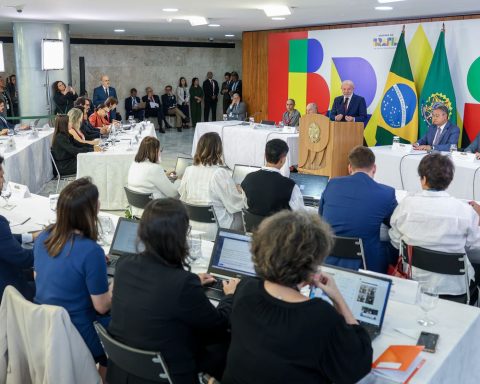The president of the US Federal Reserve (FED), Jerome Powell, anticipated that the monetary entity will continue to increase interest rates until there is “clear and convincing” evidence that inflation, which currently stands at 40-year records in that country, begins to fall steadily.
In what analysts interpreted as the harshest statements of Powell To date, the official He stated during a live interview organized by The Wall Street Journal that the Fed “will continue to push” until “inflation recedes in a clear and convincing way.”
The FED already increased its reference rate by 25 percentage points in March and 50 points this monthin what was the eldest toindividual lza since 2000placing it in this way in a range of 0.75% to 1%.
After the latest upward revision and recent comments from officials of the entity and Powell himself, the Fed is expected to make further hikes of 50 points during the next monetary meetings in June and Julyalthough the range will depend especially on what happens in the short term with inflation, as explained by the president of the entity.
In this context, if the FED does not see signs of a decline in inflationary pressures, “a greater aggressiveness will be considered,” he warned, and, if not, “a slower rate will be evaluated” in raising rates.
During the dialogue, the president of the central bank emphasized the need to curb the problem and described price stability as “the basis of the economy”, according to the Bloomberg agency.
The FED faces the risk that a tightening of its monetary policy will cool the economy too much, even generating the possibility of a recession, a fear that has spread in the stock market indices in recent weeks, already affected by the rise itself of rates, with accumulated declines so far this year of 15% in the S&P 500 and 24% in the Nasdaq.

In that sense, Powell acknowledged that the risks of a tough monetary policy – including a “slight increase” in the unemployment rate – are costs worth paying in order to curb price rises.
So far, the Fed’s position is to increase the rate until the end of the year to a “neutral” level (that does not drive neither a contraction nor an expansion of the economy) which is estimated to be 2.5%. , although Powell did not rule out, if necessary, “going beyond the levels that are considered neutral”, if inflation does not calm down.
“The (US) economy is strong and we think it can withstand less accommodative monetary policy,” Powell said. who last week was ratified by the Senate for a second four-year term.
In that sense, one piece of information that the FED follows closely to assess the state of the economy is the unemployment rate, which in April stood at 3.6%.
Although one million jobs are still missing to reach the pre-pandemic levels of February 2020, the unemployment rate for that month (3.5%) was close to historical lows – not registered since the end of the sixties – in United States.
In April, the Consumer Price Index registered an increase of 8.3% year-on-year, according to data from the Department of Labor published last week, which represented a slight decrease compared to 8.5% in March, when a record was registered in 40 years.
Despite the fact that March is considered to have represented a peak, various analysts and economists believe that the restrictions due to outbreaks in China and the development of the war between Russia and Ukraine will continue to push prices up.


















